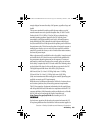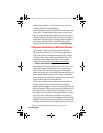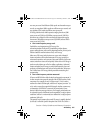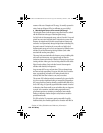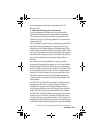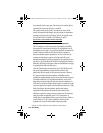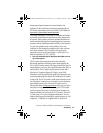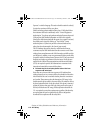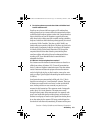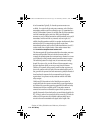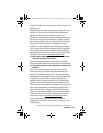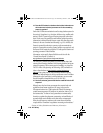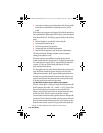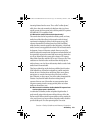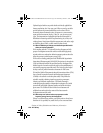Section 4: Safety Guidelines and Warranty Information
4A: Safety 113
9. Do wireless phone accessories that claim to shield the head
from RF radiation work?
Since there are no known risks from exposure to RF emissions from
wireless phones, there is no reason to believe that accessories that claim
to shield the head from those emissions reduce risks. Some products that
claim to shield the user from RF absorption use special phone cases,
while others involve nothing more than a metallic accessory attached to
the phone. Studies have shown that these products generally do not work
as advertised. Unlike "handsfree" kits, these so-called "shields" may
interfere with proper operation of the phone. The phone may be forced to
boost its power to compensate, leading to an increase in RF absorption.
In February 2002, the Federal trade Commission (FTC) charged two
companies that sold devices that claimed to protect wireless phone
users from radiation with making false and unsubstantiated claims.
According to FTC, these defendants lacked a reasonable basis to
substantiate their claim.
10. What are wireless telephone base stations?
Fixed antennas used for wireless telecommunications are referred to as
cellular base stations, cell stations, PCS ("Personal Communications
Service") stations or telephone transmission towers. These base stations
consist of antennas and electronic equipment. Because the antennas
need to be high in the air, they are often located on towers, poles, water
tanks, or rooftops. Typical heights for freestanding base station towers are
50-200 feet.
Some base stations use antennas that look like poles, 10 to 15 feet in
length, that are referred to as "omni-directional" antennas. These types
of antennas are usually found in rural areas. In urban and suburban
areas, wireless providers now more commonly use panel or sector
antennas for their base stations. These antennas consist of rectangular
panels, about 1 by 4 feet in dimension. The antennas are usually
arranged in three groups of three antennas each. One antenna in each
group is used to transmit signals to wireless phones, and the other two
antennas in each group are used to receive signals from wireless phones.
At any base station site, the amount of RF energy produced depends on
the number of radio channels (transmitters) per antenna and the power
Sprint FM OUG NO BROWSER CTIA-3a.book Page 113 Wednesday, October 9, 2002 1:42 PM



